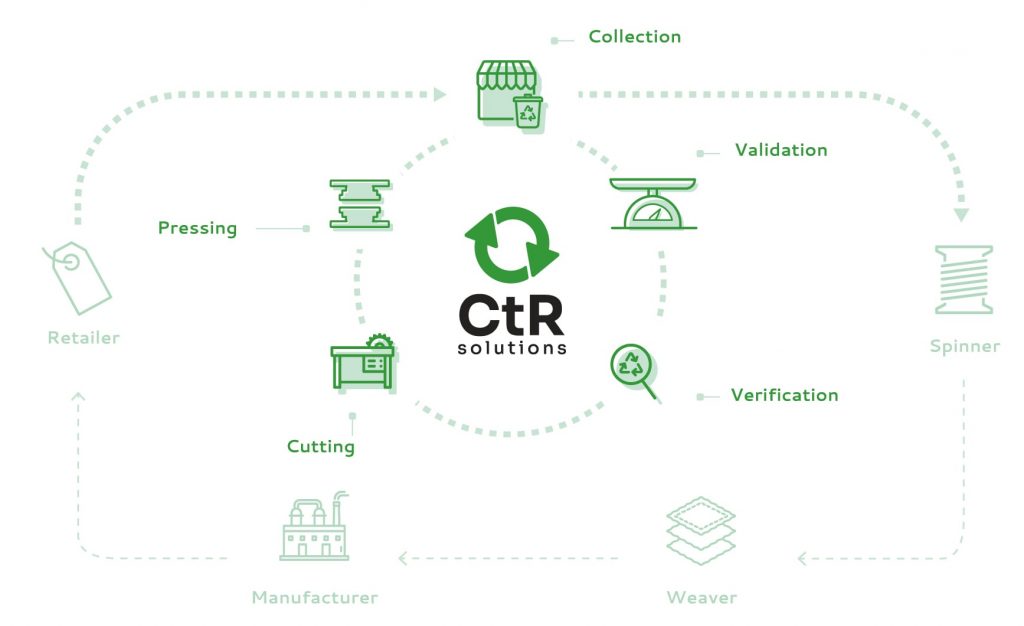Our process
A groundbreaking textile recycling centre
The great global challenge we face in the textile industry is how to generate enough recycled fibres to feed the current volume of production. The need to provide a solution to this “problem” has led us to the conviction of setting up a pioneering textile recycling centre, in which the necessary phases are brought together to create circularity for unsold stock, waste from the manufacturing process and used garments, with full traceability.
- Collection order at the factories.
- Collection of the identified textile waste.
- Weighing and validation of incoming mass balance.
- Identification of fibre type, quality and colour.
- Checking for and removal of possible disposable products (paper, cardboard, selvedge…).
- Automatic recording and authentication of data into the system.
- Cutting of the textile waste according to the type of fibre and the customer’s needs.
- Shredding in the case of fibres that require it.
- 300-400kg bales for transport optimisation.
- Recording and traceability of the output mass balance. Delivery to the recycled fibre producer.
PRE & POST consumER
- Collection in containers intended for textiles waste, shops and department stores.
- Recording of the input mass balance. Traceability.
- Identification by condition, separation of garments with a second life for social purposes.
- Identification of the types of fibres of garments to be recycled through electroscopic technology, capable of identifying and separating by type of fibre and colour.
- Automatic registration and authentication of the information in the system.
- Identifaction of fibres from unsold stocks, surplus production and low- quality fabrics.
- Removal of disposable supplies and accessories (paper, cardboard, zips, buttons…) by means of a semi-automatic process and projection of scaling to industrial level.
- Automatic registration of the waste transferred to the next link in the process.
- Cutting and shredding of the textile waste according to the type of fibre and the customer’s needs.
- Separation of non-recyclable waste destined to produce non-woven fabrics and application in other sectors.
- 300-400kg bales for transport optimisation.
- Recording and traceability of the output mass balance. Delivery of recycled fibre to the producer


